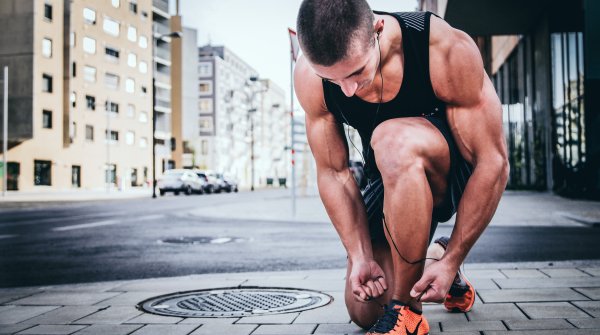A sprint is not enough; the sports world needs to think more persistently and intensively about the issue of sustainability, and get up to speed. According to myclimate, the status quo is as follows: A climate-friendly footprint is 0.6 tons per year per capita. In Germany, we average eleven tons. Harald Rettich (53) iis the head of Corporate Partnerships at myclimate and emphasizes in the interview that we no longer have time to think about how to reduce greenhouse gases in the atmosphere. We have to take action - whether it's athletes* or the sports industry. And he also says how.
The international initiative myclimate, which has its roots in Switzerland, claims to be one of the world's quality leaders in voluntary CO₂-offsetting measures. With a wide variety of projects, myclimate promotes measurable climate protection and sustainable development worldwide. Emissions are reduced by replacing fossil energy sources with renewable energies, implementing local reforestation measures with small farmers, and implementing energy-efficient technologies. The consulting company's maxim: avoid, reduce, offset.
ISPO.com: Heat, drought, forest fires, floods. How much time do we actually have left to stop climate change? Ten years?
Harald Rettich: If we listen to science, then something has to happen decisively by 2030 with regard to the amount of greenhouse gases that are in the atmosphere. Because the more greenhouse gases there are up there, the warmer it will get here. 1.5 degrees of global warming is the limit that the assembled countries agreed was still bearable at the 2015 UN Climate Change Conference in Paris. But that doesn't mean we won't feel the consequences by then. And every tenth of a degree that goes beyond the 1.5 degrees will be reflected in our latitudes in increased heat waves, in severe weather events, in periods of drought. In other parts of the world, it shows that they will become uninhabitable much, much faster. We are currently on a course that will take us to around 2.5 to 2.7 degrees by 2050, and three degrees by 2100 if things continue at this rate.
What is the reason for this?
It's because greenhouse gas emissions are far too high worldwide. This is caused in particular by the high standard of living, especially in the industrialized nations. If we look at Germany, we are in sixth place in a global comparison. We are talking about a relatively small country here. Of course, China and the U.S. are ahead of us, but sixth place is quite an achievement. It's not praiseworthy for us. But that's simply because of how we live, how we heat, how we live, how much we consume, how we go on vacation, and all of that adds up to far too high a CO₂-footprint.
Vacation - good keyword. Almost all German states currently have school vacations. Is going camping by car actually more climate-friendly than flying to a package vacation?
In principle, camping is more climate-friendly than flying somewhere - the flight emissions are enormous. For a flight from Munich to Mallorca and back, the emissions are around 0.48 tons. I won't be able to achieve that by car in a hurry. And sleeping in a tent generates a negligible amount of CO₂-footprint.
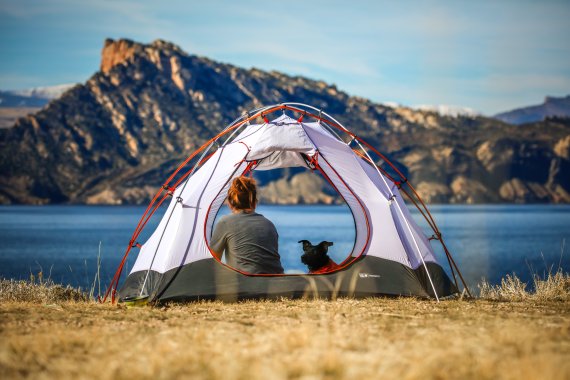
So sleeping in a tent is climate-friendly, how can camping in general be made more sustainable?
An exciting question! The answer: Just like everything else in everyday life. For example, when buying equipment, pay attention to what material something is made of. And maybe even give preference to used materials. Presumably, the diet doesn't really change when camping - here, too, the rule is: vegetarian before meat-based food, because meat production also produces more CO₂ is emitted by meat production than by plant-based food. These are probably the biggest savings opportunities when camping.
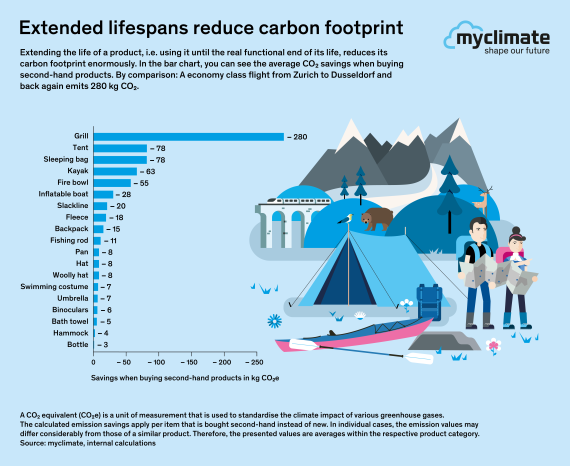
How do the CO₂-savings opportunities in our favorite hobby, sports?
Let's take a look at the topic of clothing. I do a lot of sports. It quickly becomes apparent that functional clothing is easy to care for, hard-wearing and long-lasting. Basically, these are points that have a positive impact on CO₂-balance sheet. However, this is often offset by long transport routes and high energy consumption during production. In addition, functional clothing is usually made from fossil raw materials, which eventually end up in the atmosphere as greenhouse gases. In addition, I know very well that a polyester shirt, no matter how well it is made, will eventually become microplastic. That's why I at least look at how the manufacturers work, where the textiles are produced. Whether there are material alternatives or whether they think in terms of material cycles.
Can you give an example here?
Vaude, for example, is a pioneer in these areas. And there are also quite a few other companies that are really thinking about this. Some collect plastic from the ocean and recycle that into new clothing. My problem area that I haven't been able to solve satisfactorily so far is running shoes. There I have already tested some that were made from recycled materials very sustainably. But here I had to realize that these did not meet my requirements. I run up to 80 kilometers a week. Therefore, I simply need a good shoe, or two to three pairs a year. Unfortunately, I find that I need far more resources for sports than for anything else in my life.
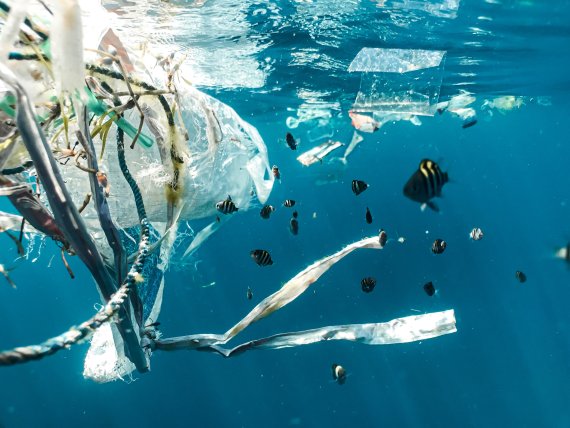
Does that stress you out?
For me, it's terrifying. But in fact, I often don't find good alternatives. As I said, that's why I always look at the manufacturers. One criterion is also that someone produces in Europe, and this saves on transport emissions in particular. I can afford that and spend the money on it. But there are also many people who can't afford the higher price, because some of the more sustainable products cost three times as much.
A good example here are products with merino wool, which are simply more expensive.
I also partially switch to merino or generally wool products. However: I could do it even more consistently, and then simply live with the loss of comfort. But no one is immune to this, including me. In this context, it is important that as many manufacturers as possible set out to become more sustainable in their processes. After all, with every part that is produced in Asia, we still have a lot of transport emissions in it. On the other hand, we can't manage without production outside Europe at the moment.
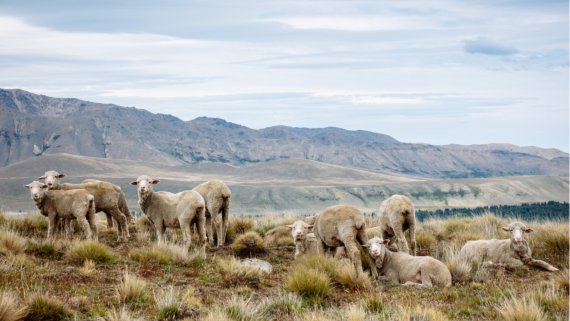
How companies can offset their emissions, that's part of the myclimate consultancy service?
Yes. But our approach goes much further. We help our clients avoid, reduce, offset greenhouse gases. In that order! And if I want to avoid, of course I first have to measure how much emissions I'm generating in the first place. For us, everything revolves around the question: How can we move into the future with as few emissions as possible? We are working on a part of the sustainability universe that includes environmental, social and corporate governance (ESG, editor's note). So we are working on the area that is very, very important at the moment. This is greenhouse gases, or greenhouse gas emissions. And we define sustainability in such a way that we have to do everything we can to live with as few greenhouse gases as possible.
Some people refer to the compensation of CO₂-emissions as selling indulgences - how do you see it?
This word is used when people don't think about the lifestyle they lead. Then they buy a few euros worth of certificates and think that's the end of the matter. But that's usually not the case. The other day, I heard from a social scientist that, according to his studies, people who compensate live more sustainably on average than people who don't compensate. Our path is always this: First, try to generate as few emissions as possible. Then, if you do generate emissions, do everything possible to reduce them. And only then offset the emissions that remain. But that should be seen as a transitional solution. One thing is certain: we don't have that much time left to clean up the atmosphere of greenhouse gases.
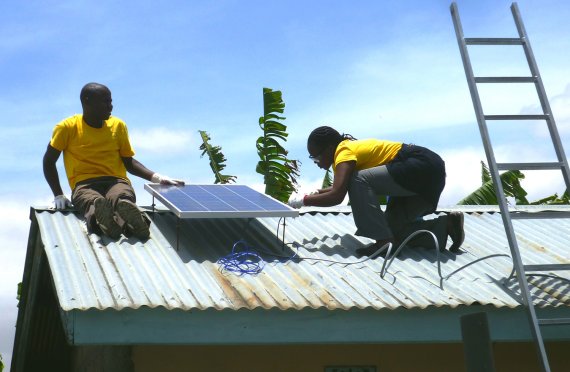
Yes, we generally have to speed up because we don't have any more time. We as a society have missed out on that. And none of this is new information. It's been around for 50 years. It's just that now we're noticing that things are getting tight. But despite all this, there is also a positive message: Everything you do helps in some way. Even small steps help. It's about creating awareness for sustainability and bringing other people along with you. That's very important, to infect as many people as possible and say, 'You, just think about how you do it. Do you really need 27 shirts or can you do it with five? Maybe you can wear your shoe 200 kilometers more? And also important: Be smart about where things come from!
And what do you say to entrepreneurs who come to you and are not quite convinced that the principle of maximizing profits without integrating sustainability aspects is out?
Basically the same message: start thinking about what you are doing. That means first finding out what emissions are generated in the first place. And then you have to look at where they are generated and how they can be reduced. Anyone can do that. Ultimately, this has little to do with the principle of profit maximization that still prevails in some cases. And I always tell my customers: 'Climate protection in the company, that's a successful model'. That's not a nice to have or something you put on top, but the future factor for successful companies. And carrying on as before - that won't work for much longer, otherwise you'll simply be squeezed out of the market.
- ISPO awards
- Mountain sports
- Bike
- Design
- Retail
- Fitness
- Health
- ISPO Job Market
- ISPO Munich
- ISPO Shanghai
- Running
- Brands
- Sustainability
- Olympia
- OutDoor
- Promotion
- Sports Business
- ISPO Textrends
- Triathlon
- Water sports
- Winter sports
- eSports
- SportsTech
- OutDoor by ISPO
- Heroes
- Transformation
- Sport Fashion
- Urban Culture
- Challenges of a CEO
- Trade fairs
- Sports
- Find the Balance
- Product reviews
- Newsletter Exclusive Area
- Magazine





